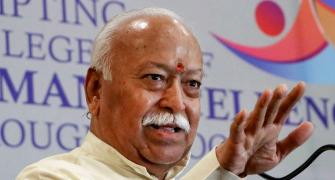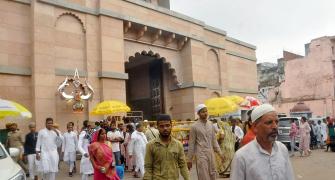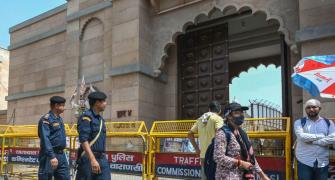The Supreme Court agreed to hear on Friday a plea challenging the Allahabad high court order of conducting a 'scientific survey', including carbon dating, to determine the age of a 'Shivling' which was said to have been found at the Gyanvapi mosque complex in Varanasi.

A bench comprising Chief Justice D Y Chandrachud and justices P S Narasimha and J B Pardiwala took note of the submissions of senior advocate Huzefa Ahmadi, appearing for the Gyanvapi mosque management committee, and agreed to list the plea for hearing on Friday.
"The Allahabad high court has passed an order pending the appeal," the senior lawyer said.
The high court, on May 12, ordered determination of the age of the structure claimed to be a Shivling in the mosque in Varanasi using modern technology.
It set aside an October 14 order of the Varanasi District Court that rejected a plea for scientific investigation, including carbon dating, of the structure found in May 2022 during a court-mandated survey of the Gyanvapi mosque located next to the Kashi Vishwanath temple.
Following the high court order, a local court at Varanasi on May 16 agreed to hear a plea for a survey by the Archeological Survey of India (ASI) of the entire Gyanvapi mosque premises.
Accepting the petition filed by lawyer Vishnu Shankar Jain, who represents the Hindu side, District Court Judge A K Vishvesh asked the Gyanvapi mosque committee to file its reply to the plea by May 19. The court fixed the next hearing in the matter on May 22.
Prior to this, the high court, on May 12, directed the Varanasi district judge to proceed, in accordance with law, on the application by the Hindu worshippers for conducting a scientific probe of the 'Shivling'.
The high court order had said no harm should be done to the structure, which the Hindu petitioners claim is a 'Shivling'.
However, the mosque authorities say it is part of a fountain in the 'wazu khana', where ablutions are performed before namaaz.
The high court passed the order on a revision petition filed by Laxmi Devi and three others challenging the Varanasi court order.
The high court had obtained a report from various institutions, including the IITs in Kanpur and Roorkee and Birbal Sahni Institute of Lucknow, before ordering for determination of the age of the structure.
The report says direct dating of the structure is not possible and the age can be ascertained with proxy dating of materials, which can 'correlate with the establishment of the 'lingam' if there is any'.
'This needs a thorough study of the materials surrounding the 'lingam',' it adds.
The report also suggests the dating of some organic materials below the surface can ascertain the age but it needs to be established that they are related to the structure.
The court considered suggestions of Prof Javed N Malik of Department of Earth Sciences, IIT Kanpur.
Prof Malik suggested that to understand the buried material and structure it would be essential to undertake a detailed subsurface survey through Ground Penetrating Radar (GRP). This will be helpful towards identifying the remains of the ancient structures buried, if any, at the site, he added.
The ASI, in its 52-page report, had given the opinion that the age of the structure can be determined through scientific method without causing any harm to it. Its opinion was based on studies conducted by IIT Kanpur, IIT Roorkee, Birbal Sahni Institute, Lucknow, and another educational institute.
On November 4, 2022, the high court had sought the response of the ASI in the matter and directed the ASI director general to submit his opinion whether investigation of the said structure, if examined through carbon-dating, GPR, excavation and other methods adopted to determine its age, nature and other relevant information, is likely to damage it or a safe evaluation about its age can be done.
A suit was filed in the Varanasi District Court seeking the right to regular worship of Maa Shringar Gauri and other deities whose idols the petitioners submitted are located in the mosque complex.










